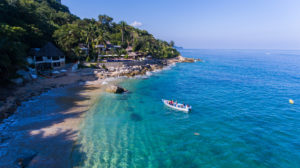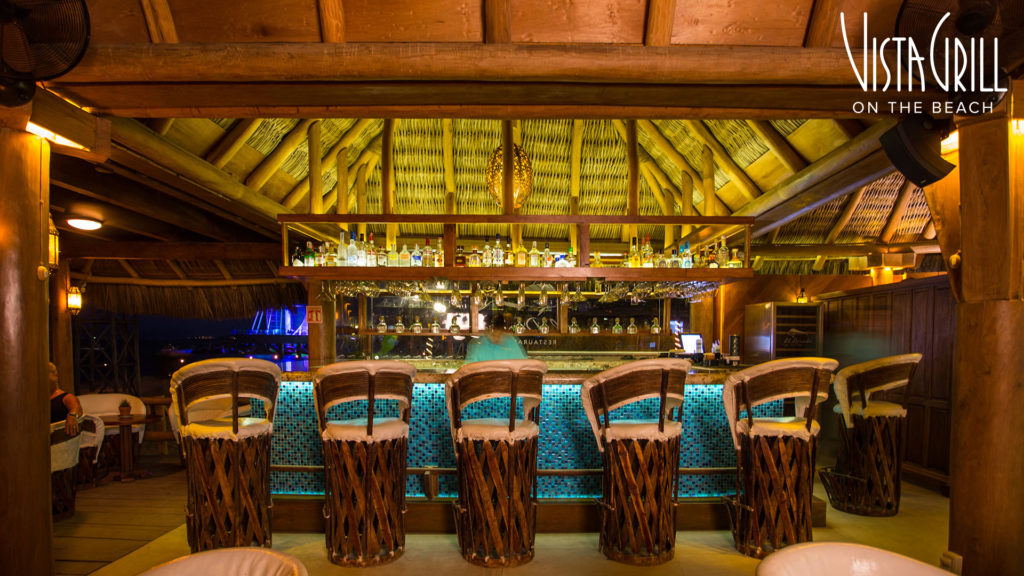An interview with Sofia Boettner, Marketing Director of Grupo La Palapa in Puerto Vallarta, Mexico. We talk about the amazing Luxury Private Beach Resort, La Troza. We also talk about La Palapa, the Vista Grill and El Dorado Restaurants.
Also the 12 Day Celebration and Pilgrimage of Our Lady of Guadalupe and the history behind the Holiday
Listen to The Podcast
Hello fellow travelers, welcome this episode of the Puerto Vallarta Travel show. I am your host Barry Kessler and I am just so happy to be introducing you to my favorite vacation destination, and maybe even yours, Puerto Vallarta Mexico.
That music you were just listing to is performed by Alberto Perez, the owner of the La Palapa Group of Restaurants. Those are La Palapa, The El Dorado Restaurant, and at night for dinner The El Dorado transforms into the ever so romantic Vista Grill with those dramatic views of the Los Muertos Pier all lit up at night in beautiful colors. Of course, at La Palapa you can enjoy that same view of the Los Muertos Pier all day long for breakfast, lunch or dinner, seated with your toes in the sand right at the water’s edge. It’s so romantic, it’s so Puerto Vallarta my friends!
This week, I have a special guest, Sofia Boettner, with Group La Palapa will be talking about their beautiful property, La Troza Beach Resort, south of Puerto Vallarta, actually just north of Playa Las Animas, but before we get to that conversation, let’s see what’s happening in Puerto Vallarta this week, November 29, 2017.
Subscribe On iTunes & Leave a Good Review
Subscribe On Android Devices
Send Barry an Email
Last week I promised you I would talk about the Pilgrimage, the 12-day pilgrimage of our Lady de Guadalupe. The one that is going to be celebrated in Puerto Vallarta for 13 days this. Well, in Puerto Vallarta, there is this beautiful church and it serves as an icon. It is part and parcel of the landscape and the center of all the tourist brochures, everyone wants a picture of the church, the Iglesia de Nuestra Senora de Guadalupe. And because of its name, and dedication to the Lady of Guadalupe, it has been one of the places in Mexico, besides the Basilica of Our Lady of Guadalupe in Mexico City, where the faithful make the pilgrimage to honor this occasion, this event that changed Mexico, and entwined Mexico with the Catholic Church.
I want to tell you about the history of the church in Puerto Vallarta, the Iglesias de Nuestra Senora de Guadalupe, but before that, let me give you a little history and let me tell you the story of the miracle of Our Lady of Guadalupe, the story of Juan Diego.
Just keep in mind that 10 years earlier, Hernando Cortez had just conquered Mexico City and just defeated Montezuma.
And in 1523 Franciscan missionaries came ‘a evangelizing the Indian people who were living there. And, they were really good at it too and an Archdiocese of Mexico City was established in 1528.
Now Juan Diego and many of his family members were among the early native Indian converts to Catholicism.
He was baptized Juan Diego. He was given that name by the church. His name was some other Indian name that I cannot pronounce it I’m not even going to try it.
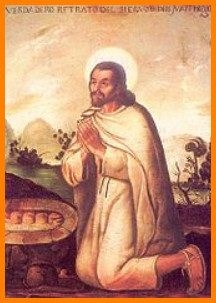
Juan Diego was baptized in 1525 along with his wife and his uncle.
Now remember that Juan Diego had grown up under Aztec oppression, and the Aztecs were not really nice people.
They would cut the hearts out of sacrifices while they were still alive. It was pretty gross this was a bloodthirsty civilization.
It was said that over 50,000 human beings were sacrificed having their hearts cut out every year.
In fact, just imagine back in 1487, before Cortez arrived when Juan Diego was just 13 years old he would have witnessed all this chaos and bloodthirsty behavior. It must have shocked the Spanish Conquistadores no end.
In 1520 Cortes outlawed human sacrifice and he took the two idols out of the pyramids, cleansed the stone of all the blood, and erected a new altar.
And then, Cortez along with his soldiers and father Olmedo then climb the stairs of the pyramid with the Holy Cross and images of the Virgin
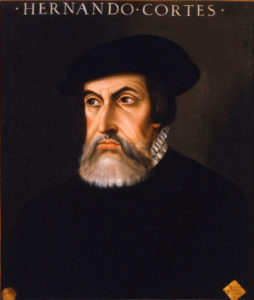
Mary and of Saint Christopher and upon this new altar Father Olmedo held a mass. Right there, in the place where all of those sacrifices had taken place, where all that bloodshed and tragic loss of life took place, there took place, a Mass. A bloodless, deathless mass was held.
But that didn’t make the Aztecs very happy in fact it sparked all-out War.
Once again Cortez had to subdue his enemy, and in August of 1521 a year later he finally was able to stop that fighting.
So, now let’s get back to the story of Juan Diego.
Juan Diego was headed to mass and on the way to mass he would walk past Tepeyac Hill, on the outskirts of Mexico City. And this one morning, in the early morning hours of December 9th 1531, this 57 year old Indian peasant was walking along and started to hear beautiful music and he saw a beautiful lady who called out his name. He came forward and she told him who she was. That she was the Virgin Mary the mother of Jesus, and she asked him to go to the bishop and ask the bishop to build a church right there at Tepeyac Hill, to honor her.
Bishop Zumarraga was a nice guy, and when Juan Diego came to him he listened and said he would think about it.
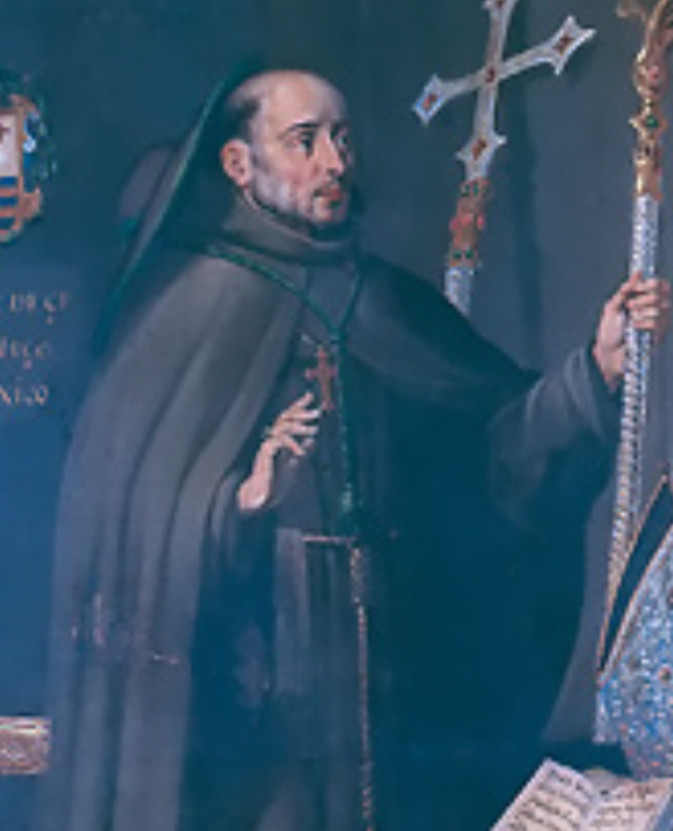
He probably didn’t believe him of course and sent Juan Diego on his way.
When Juan Diego went back past Tepeyac Hill and reported what the bishop had said Mary told him to try again.
So the next day, although it was even harder because, well, the bishop made him wait a long, long, time.
He told the bishop the story and asked him to build the church. This time the bishop said bring back a sign from Mary, to prove the story. On December 11th Juan Diego, instead of going back,
was caring for his really sick uncle and his uncle asked him to bring a priest to hear his confession and to administer his final rites.
Then the following day, on December 12th as Juan Diego went out again but he was a little embarrassed, so he avoided Tepeyac Hill because he was embarrassed that he kinda ditched Mother Mary the day before you know, when he was caring for his uncle. But Mary, cut him off at the pass and says hey, don’t worry it’s okay. It’s alright, you don’t have to worry your uncle is going to be fine in fact his health has been restored now please just do as I ask. Now as for this sign for the Bishop, go to the top of the hill and pick some flowers. So, Juan Diego went to the top of the hill which was dry and covered with snow and cactus, and he actually found some beautiful roses that were not familiar to Juan Diego as they weren’t even native to Mexico and actually native to Spain. Juan Diego gathered the roses up in his sash he was wearing a like a poncho. They call it a tilma. Anyway, he brought the Roses back in his Poncho, in his tilma and Mary arranged them, and then rewrapped them up again handed it to him and said now take these back to the bishop. Tell him I want my Church.
And so Juan Diego went back and waited even longer this time and finally when he had a chance and another audience with the bishop. He repeated the message and opened his tilma, and out spilled these roses. The bishop not only saw the flowers but also saw the image of Mary, Our Lady de Guadalupe which had been emblazoned upon the tilma upon this guy’s poncho.
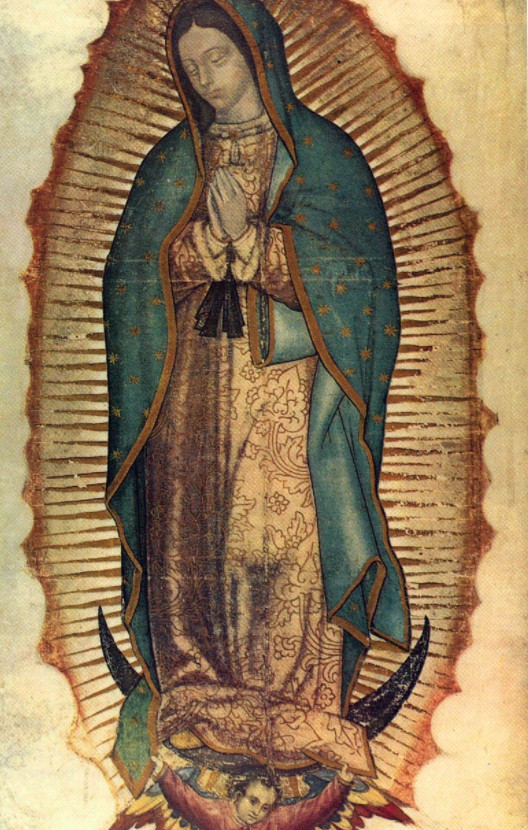
Bishop Zumarraga fell to his knees and he asked for forgiveness for ever doubting Juan Diego, and then he took the tilma and he laid it on the altar of his chapel. By Christmas of that year an adobe structure was built on top of Tepeyac Hill in honor of our Blessed Mother Our Lady of Guadalupe and it was dedicated in December 26th, 1531 which is the feast of Saint Stephen the Martyr.
When Juan Diego saw his uncle next, his uncle had indeed recovered, and told the story of how the virgin had appeared before him and made him well.
So, December 9th marks the feast day of Saint Juan Diego and December 12th the feast of Our Lady of Guadalupe. This event was very important in bringing more and more people, more and more of the Indians into the Catholic faith and it was the Tipping Point right then in the history of Catholicism and Mexico.
In Mexico City at the Basilica of Our Lady of Guadalupe, the faithful come from all over Mexico to make the pilgrimage to see the 400-year-old tilma, with the figure of the Virgin Mary, the Lady of Guadalupe emblazoned on it. They crawl on their knees to the basilica. At least some of them do. I have a video that shows how it’s celebrated in Mexico City, but to tell you a little about how it’s celebrated in Puerto Vallarta, I called my buddy Dee, from Poland Ohio, and Dee is as much of a Vallarta nut as I am. We met on the Trip Advisor Puerto Vallarta Forum page so we have never met in person, but following her adventures in Vallarta, I know that Dee is a believer and she loves this event, so I asked her to come on and tell us what happens during the 12 day Pilgrimage in Puerto Vallarta. So lets go to Poland Ohio and Talk with Dee.
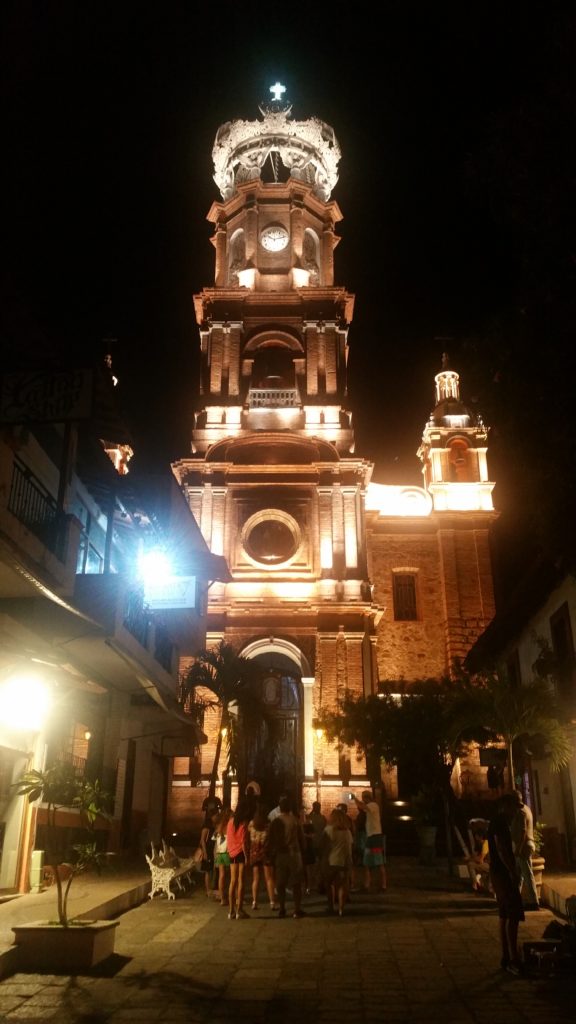
Now La Iglesias de Nuestra Señora de Guadalupe in Puerto Vallarta’s history started in the early twentieth century, The foundations of the church were started in 1903, but at the time there was already a small chapel there dedicated to Virgin Guadalupe. In 1915 father Francisco Ayala arrived and he suggested that a bigger temple than the one that had been designed, be built instead.. When Father Francisco Ayala arrived to the port in 1915, he suggested remodeling the building to resemble the design of the original Basilica of Guadalupe in Mexico City. The church was then officially promoted from a chapel to a parish.
Construction stopped in 1926 during the Cristero War and resumed years after in 1929.
Now I have to tell you about this War the Cristero War. I mean, I had never heard of it. Check this out….
It seems that the revolutionaries who took over after the Spanish were ousted were very distrustful of the clergy. They wrote in their constitutions limits and restrictions on the Catholic Church and religious freedoms. Most of the presidents, post-independence and revolution ignored these laws and limits, but The Plutarco Elías Calles administration (1924–28) felt its revolutionary initiatives and legal basis to pursue them were being challenged by the Catholic Church. To destroy the Church’s influence over the Mexican people, anti-clerical laws were instituted, beginning a ten-year religious conflict that resulted in the death of thousands of armed civilians. On the opposing side was an armed professional military sponsored by the government. Calles’ Mexico has been characterized by some as an atheist state, and his program as being one to eradicate religion in Mexico.
Calles applied the anti-clerical laws stringently throughout the country and added his own anti-clerical legislation. In June 1926 he signed the “Law for Reforming the Penal Code”, known unofficially as the “Calles Law.” This provided specific penalties for priests and individuals who violated the provisions of the 1917 Constitution. For instance, wearing clerical garb in public (i.e., outside Church buildings) earned a fine of 500 pesos ($250 U.S. per the historical exchange rate); a priest who criticized the government could be imprisoned for five years. Some states enacted oppressive measures. Chihuahua enacted a law permitting only a single priest to serve the entire Catholic congregation of the state. To help enforce the law, Calles seized church property, expelled all foreign priests and closed the monasteries, convents and religious schools.
The effects of the war on the Church were profound. Between 1926–34 at least 40 priests were killed. There were 4,500 priests serving the people before the rebellion, but by 1934 there were only 334 licensed by the government to serve 15 million people. The rest had been eliminated by emigration, expulsion and assassination. By 1935, 17 Mexican states had no priests at all.
The rebellion eventually ended by diplomatic means brokered by U.S. Ambassador to Mexico Dwight Whitney Morrow, with financial relief and logistical assistance provided by the Knights of Columbus.
On June 27, 1929, church bells rang in Mexico for the first time in almost three years. The war had claimed the lives of some 90,000 people: 56,882 on the federal side, 30,000 Cristeros, and numerous civilians and Cristeros who were killed in anti-clerical raids after the war ended. the Calles Law remained on After the resolution of hostilities, but no organized federal attempts to enforce it took place. Nonetheless, in several localities, officials continued persecution of Catholic priests based on their interpretation of the law.
In 1992 the Mexican government amended the constitution by granting all religious groups legal status, conceding them limited property rights and lifting restrictions on the number of priests in the country.
So how about that? Did you know about that war? Well I hadn’t.
So back to the Inglesia de Nuestra Senora de Guadalupe. By 1940 the entire building was finished, except the two towers. It wasn’t until 1963 that the symbol, the crown, that has given the city its identity and blessed it, was finally added. The original crown on the church was damaged by weather and erosion and was restored in 1981. On October 9th, 1995 it fell off and was destroyed by a strong earthquake in Colima.
It was replaced with a temporary fiberglass model and since then has been replaced with a crown sculptured by the famous Jaliscan Artist, Carlos Terres.
http://www.dermandar.com/p/bNyXHQ
Church of the Lady of Guadalupe Facebook Page
Website for La Iglesia de Nuestra Señora de Guadalupe in Puerto Vallarta
Okay enough already, let’s get on with the show and get to our guest.
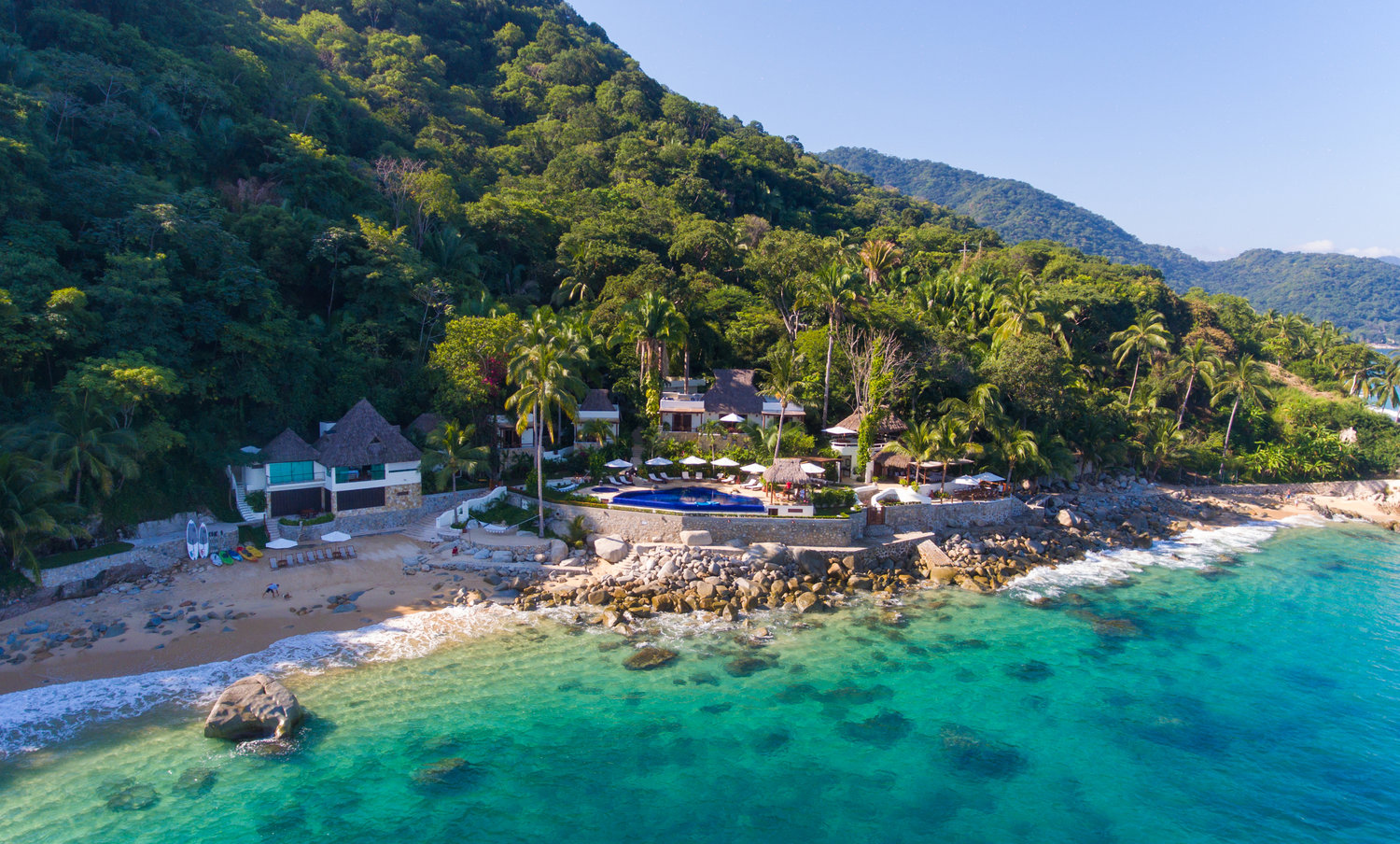
When I was hiking from Boca de Tomatlan to Las Animas, I passed by a beautiful place. Located in a little covelet is what looked like a mini resort. I sent an email to La Troza, Beach Resort and low and behold, I got an answer from someone I already knew. It was Sofia Boettner, with Group La Palapa. Sofia
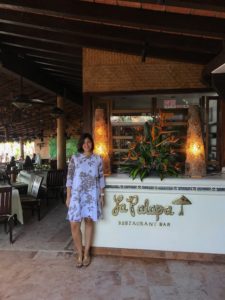
was my first contact with La Palapa. When I was looking for a theme song for the show, I actually had two theme songs chosen for the show, and I sent out emails to La Palapa and Alberto Perez, and the other email to…I’m not going to tell let’s just say it was another very famous restaurant here in Vallarta who has an incredible harp player and singer. I’ll leave it at that. You can all guess. At any rate, I heard back from Sofia right away about the song Samba de Puerto Vallarta, and she said that Mr. Perez said sure, I could use it as long as I gave credit to the artist, Him, and to his restaurant. So as you know, before each episode of the show I give a shout out to the Grupo La Palapa.
With that said, I hope all you listeners know that the people I interview and the tour venues and hotels and restaurants and artists and authors, I bring to the show because I like them and I want you to know about them. I don’t receive anything from them. No money, no food, no booze, no accommodations, nada! I refuse. I always insist on paying my own way so just keep that in mind as you listen to the show. Ask anyone I have had on the show. I have no agenda other than to bring you interesting guests interviews.
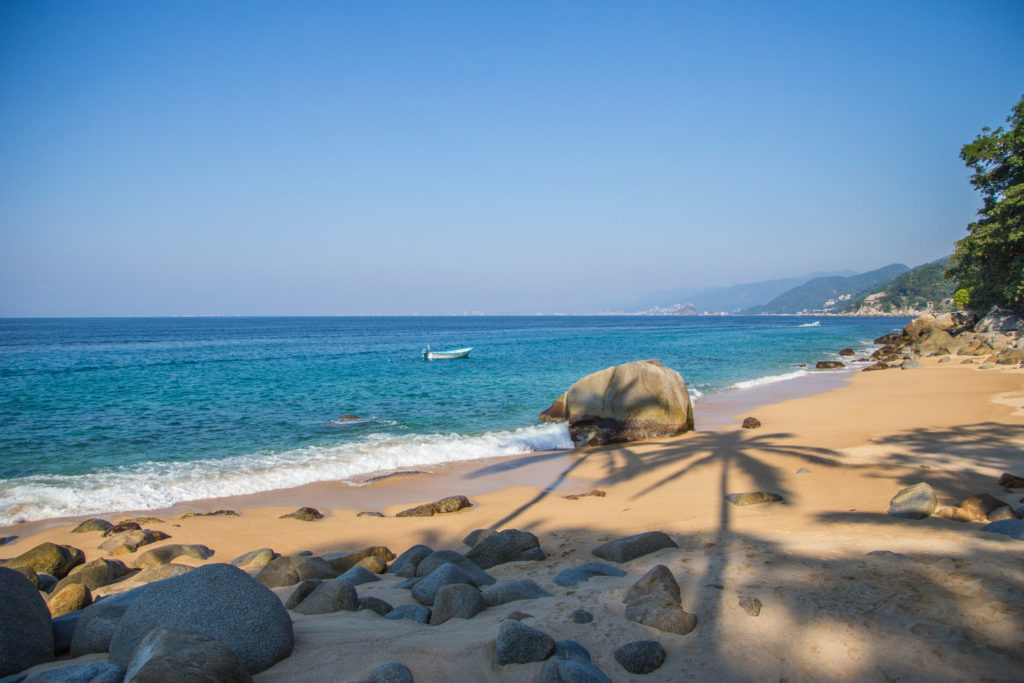
Listen to The Podcast
So getting back to Sofia, Let’s get to the interview and to a table at La Palapa, toes in the sand at the water’s edge with Sofia Boettner, of Grupo La Palapa, in Puerto Vallarta, Mexico …
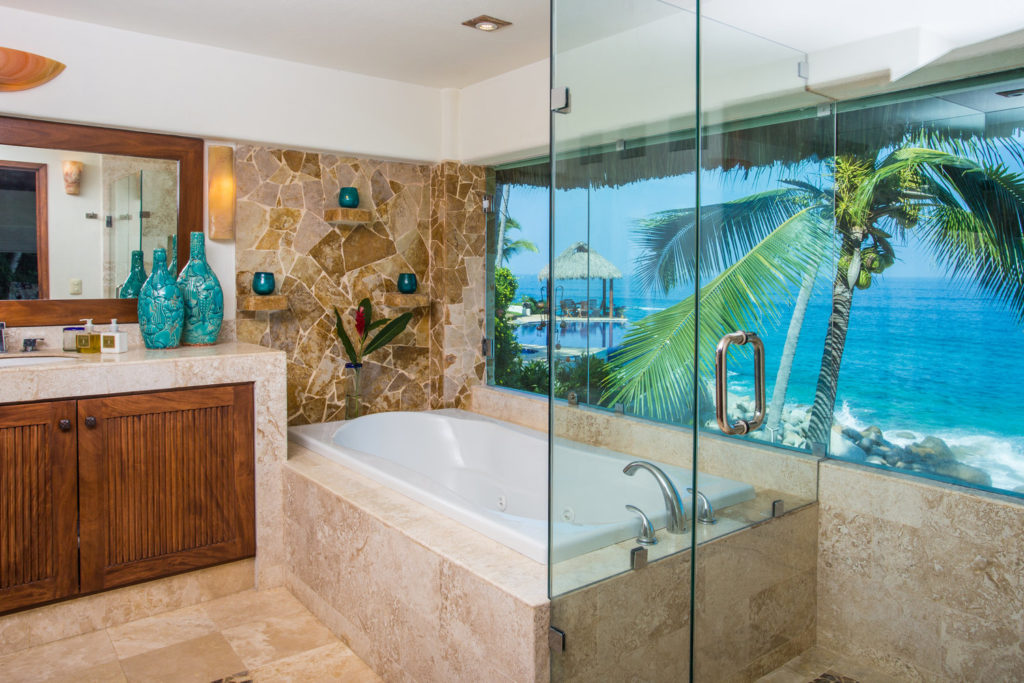
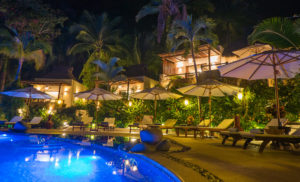
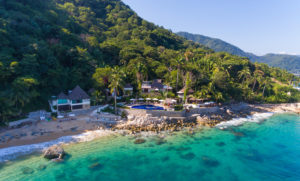
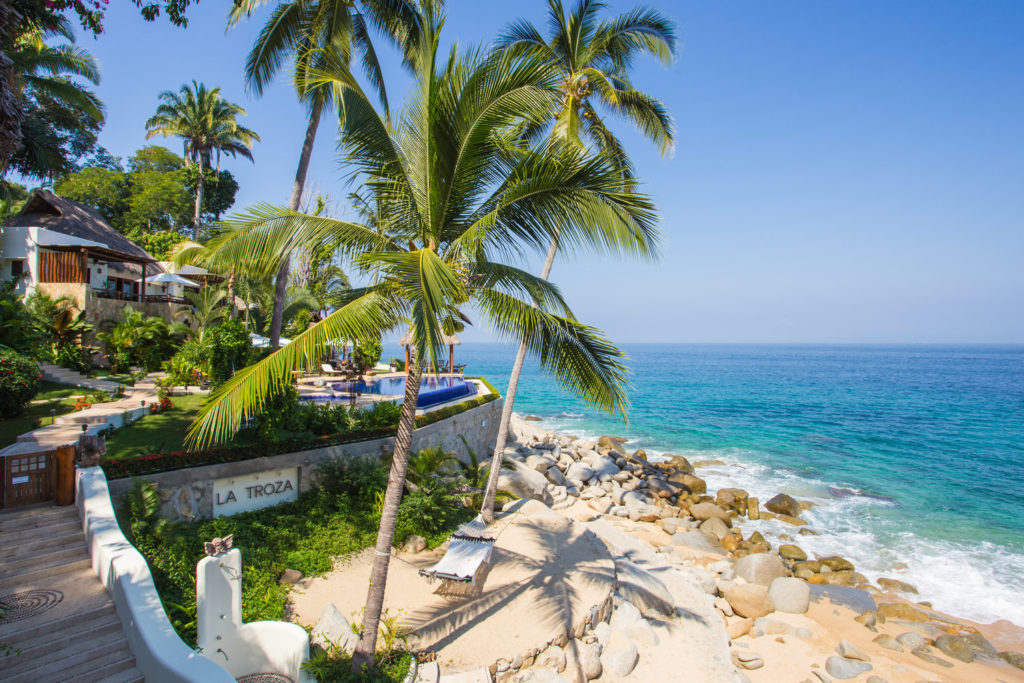
Well, that should do it for this episode of the Puerto Vallarta Travel Show.
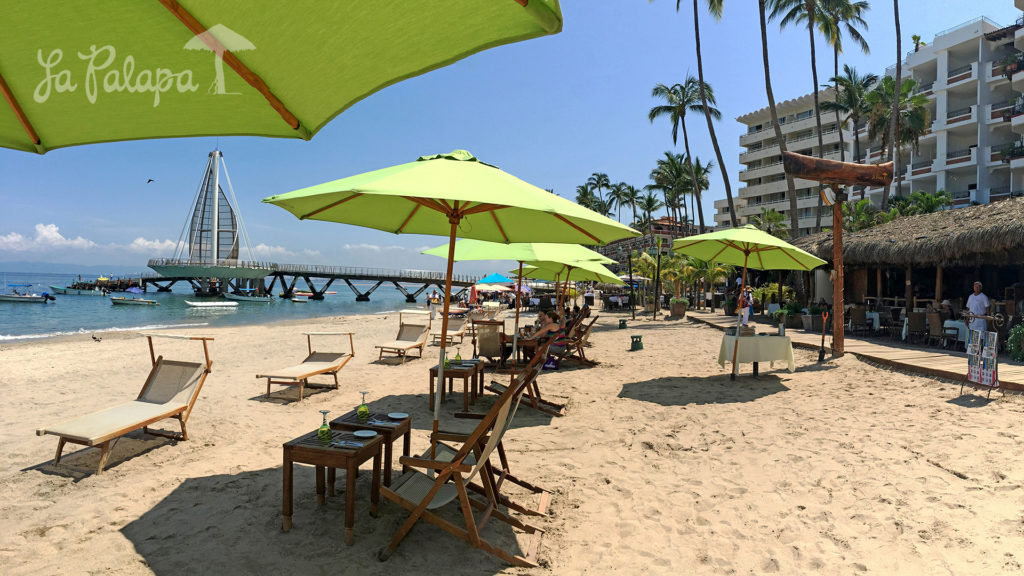
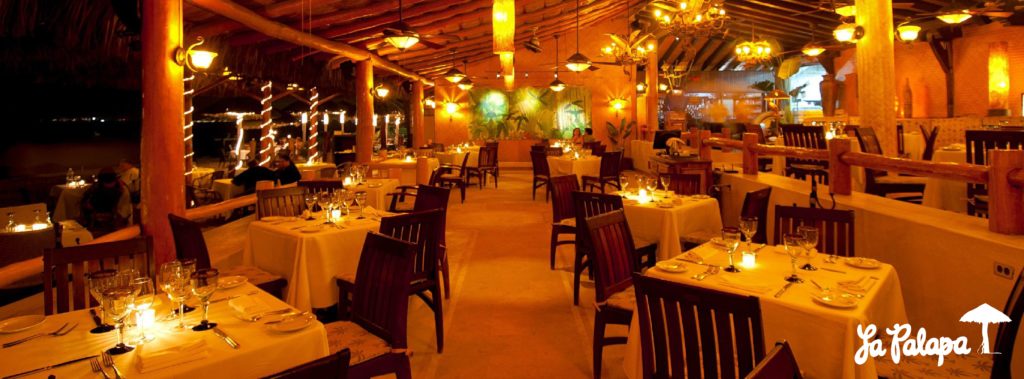

Next week stay tuned for more on the ground reports from Puerto Vallarta Mexico, with travel tips, great restaurant and excursion ideas and
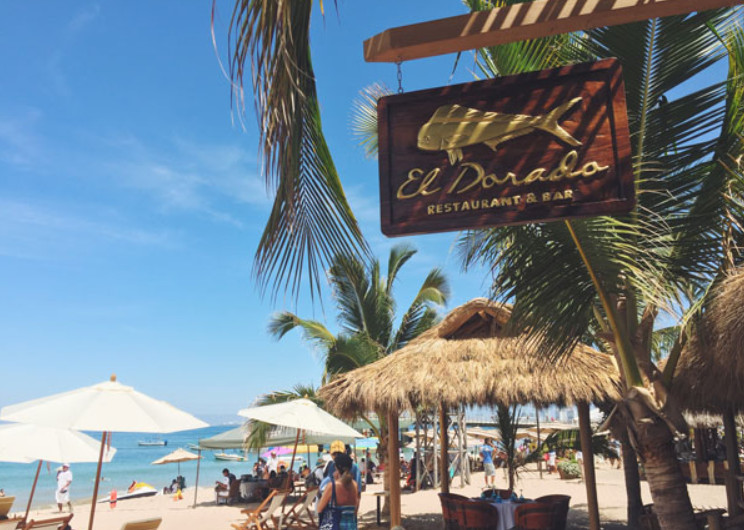
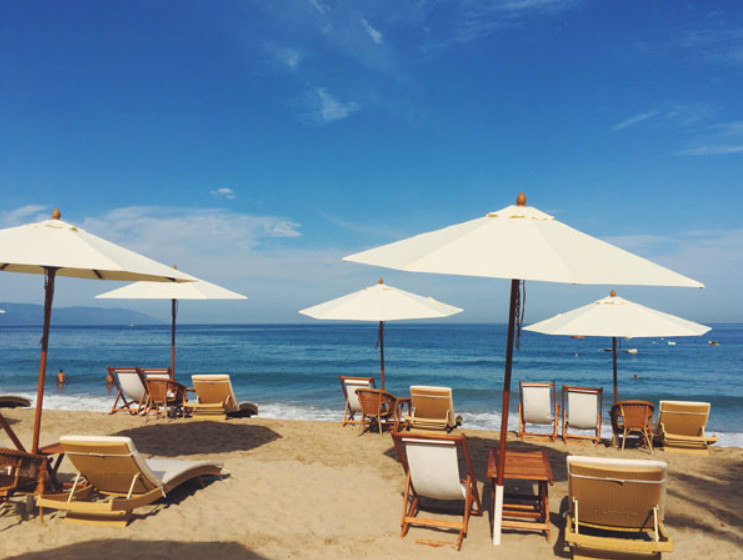
Places Sofia Talked About
Favorite food
- Panchos Takos, Puerto Vallarta
- Café de Artistas, Puerto Vallarta
- Salud Súper Food – quinoa bowls
- Lamara, Puerto Vallarta
- Ocho Tostadas, Puerto Vallarta
- Marisqueria Los Lirios
Advice
- Stay close to town to get a local experience
- History
- Culture Mexican experience
- Don’t stay in a huge resort
- Get to know south of the bay
- Boca
- Yelapa
- Las Animas
Favorite Getaway
- Day Trip – Casitas Maraika
- Overnight – Yelapa Condos, airbnb
Social Media Grupo La Palapa
- La Troza Beach Resort Facebook Page
- La Palapa Puerto Vallarta Facebook Page
- Vista Grill on The Beach in Puerto Vallarta Facebook Page
- El Dorado Beach Club Facebook Page
Links for Grupo La Palapa
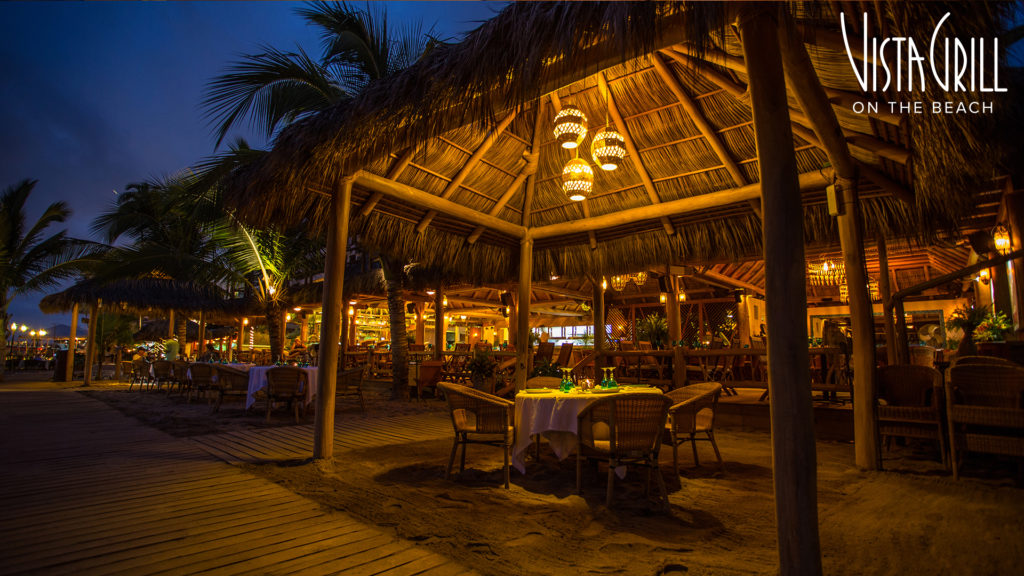
more. Until then, remember, this is an interactive show where I depend on your questions and suggestions about all things Puerto Vallarta. If you think of something I should be talking about, please reach out to me by clicking on the Contact us tab and sending us your.
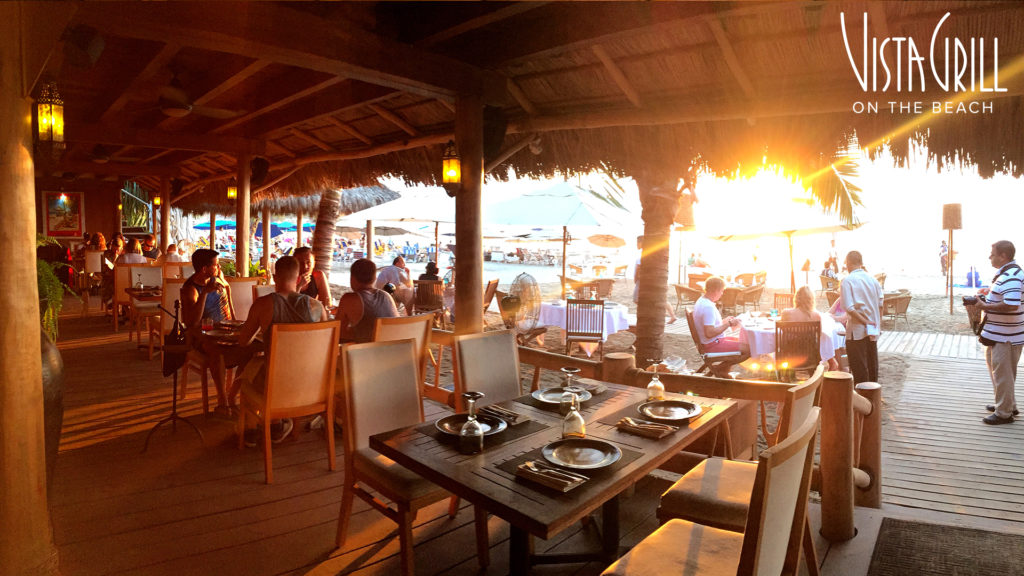
And remember, if you are considering booking any type of tour while you are in Puerto Vallarta, you must go to Vallartainfo.com, JR’s website and reserve your tour through him, right from his website. Remember the value for value proposition. His experience and on the ground knowledge of everything Puerto Vallarta in exchange for your making a purchase of a tour that you would do anyway, you’re just doing it through him as a way of saying thank you. It costs no more than if you were to use someone else so do it. Really. And when you do take one of these tours, email me about your experiences. Maybe you can come on-board and share with others what you liked or didn’t like about the tour. Again, contact me by clicking on the Contact us tab and sending off a message. Don’t forget his maps, his DIY tours and his revitalized Happy Hour Board. I have links to all of those in the show notes.
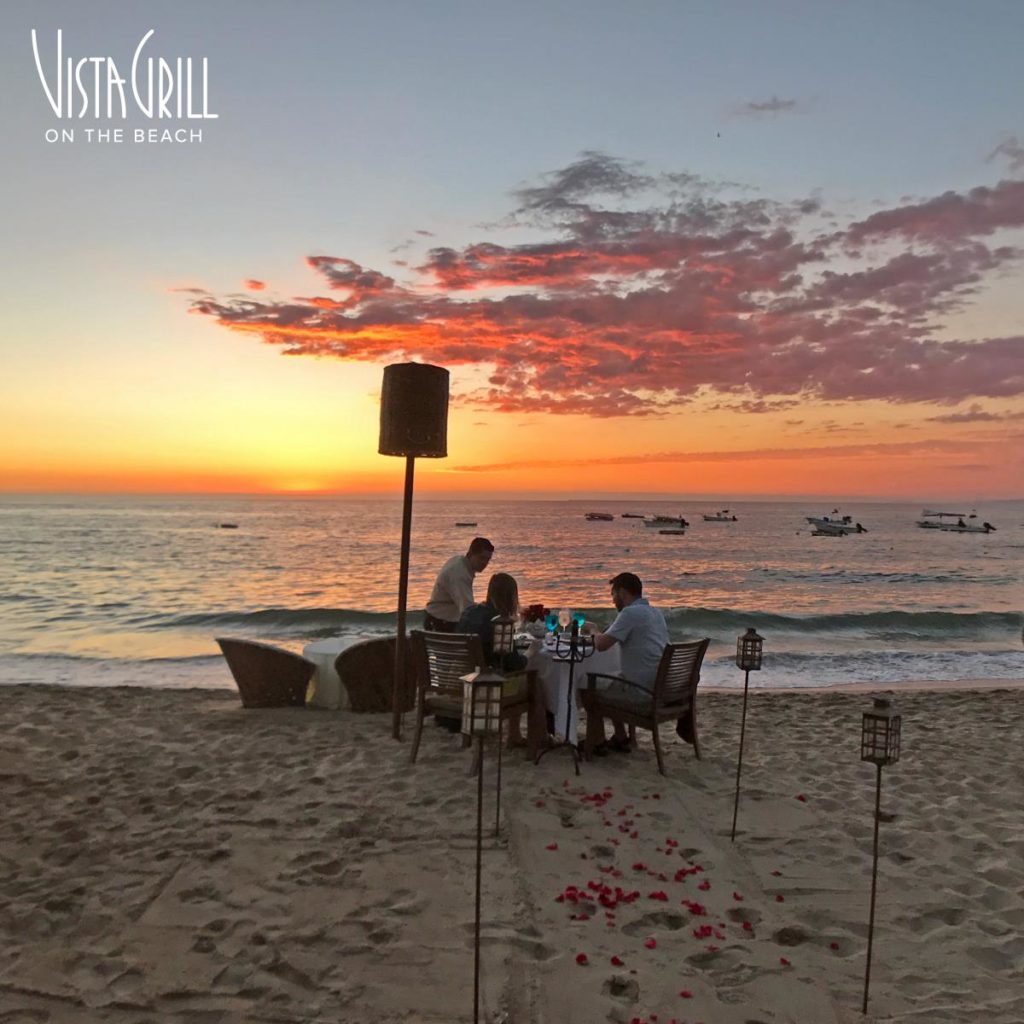
And once again, if you like this podcast, please take the time and subscribe and give me a good review on iTunes if you would. That way we can get the word out to more and more people about the magic of this place. Puerto Vallarta, Mexico. Remember I made it easy for you to do just that with each episode I create. But if you haven’t been to my website, you really need to have a look there. I have the links to the places we talk about, interesting pictures and the more all right there in my blog-posts and show-notes for each episode of the show so check them out for sure if you haven’t already all-right? All right.
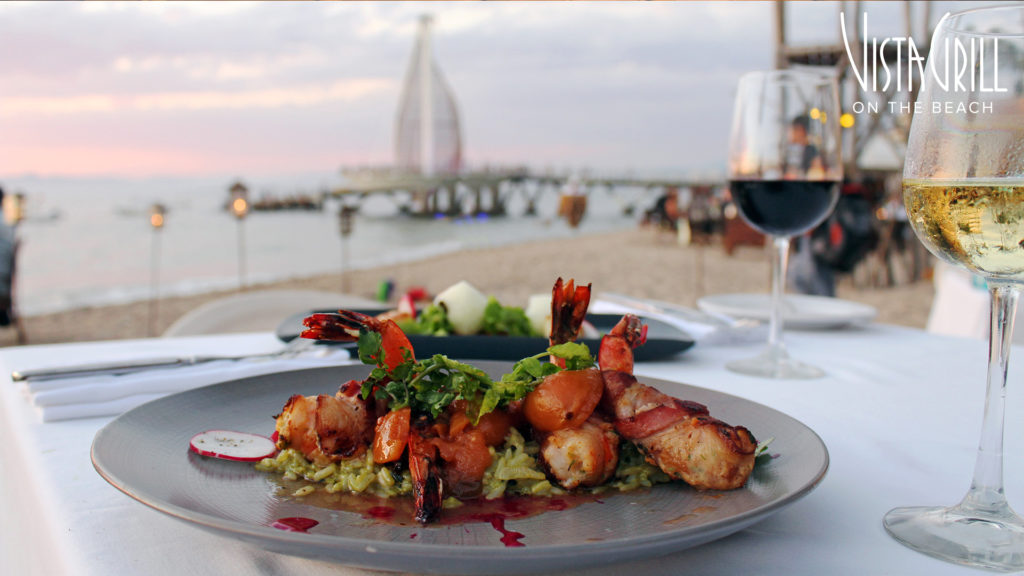
So, thanks to Sofia Boettner of Grupo La Palapa, I think she was fabulous. This is a fantastic group. I have some great pictures in the show notes of this episode of the show at puertovallartatravelshow.com. Thanks to JR for your answers and thanks to all of you for listening all the way through this episode of the Puerto Vallarta Travel Show. This is Barry Kessler signing off with a wish for you all to slow down, be kind and live the Vallarta lifestyle. Nos Vemos amigos!
[podcast src=”https://html5-player.libsyn.com/embed/episode/id/5992866/height/0/width/0/theme/standard/autonext/no/thumbnail/yes/autoplay/no/preload/no/no_addthis/no/direction/forward/” height=”” width=”” placement=”bottom” theme=””]
